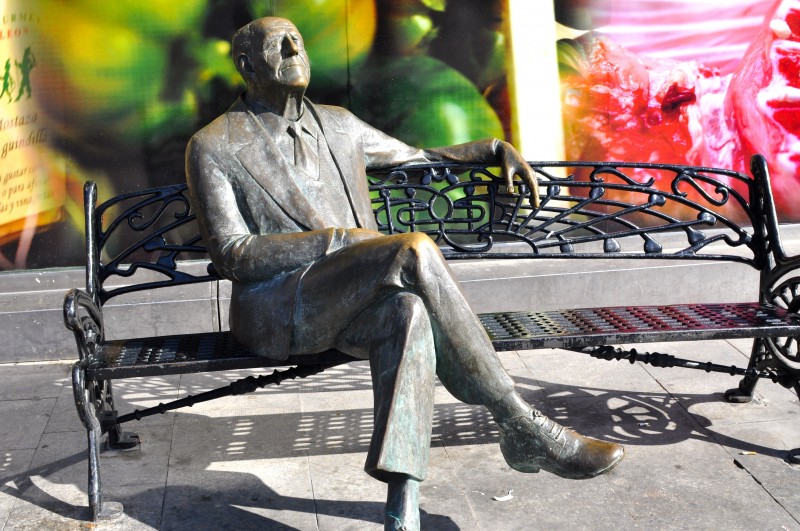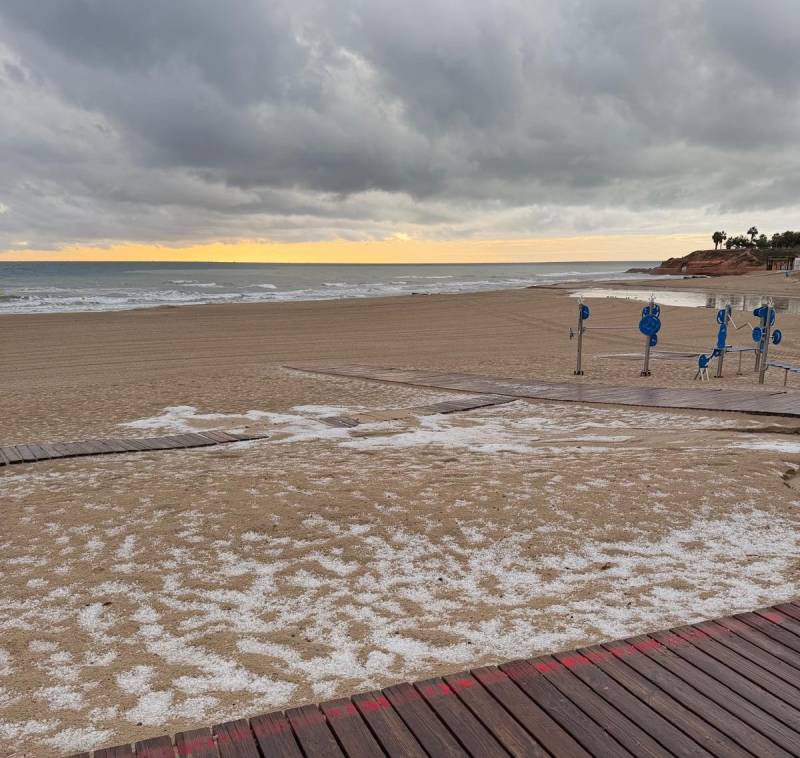- Region
- Vega baja
- Marina Alta
- Marina Baixa
- Alicante
- Baix Vinalopo
- Alto & Mitja Vinalopo
-
ALL TOWNS
- ALICANTE TOWNS
- Albatera
- Alfaz Del Pi
- Alicante City
- Alcoy
- Almoradi
- Benitatxell
- Bigastro
- Benferri
- Benidorm
- Calosa de Segura
- Calpe
- Catral
- Costa Blanca
- Cox
- Daya Vieja
- Denia
- Elche
- Elda
- Granja de Rocamora
- Guardamar del Segura
- Jacarilla
- Los Montesinos
- Orihuela
- Pedreguer
- Pilar de Horadada
- Playa Flamenca
- Quesada
- Rafal
- Redovan
- Rojales
- San Isidro
- Torrevieja
- Comunidad Valenciana
La Plaza 25 de Mayo or Plaza Flores in Alicante City
This plaza commemorates the 300 people who died aerial bombardment in Alicante on 25th May 1938
The Plaza 25 de Mayo, also known as La Plaza de las Flores is a famous square in the city centre of Alicante, joining onto the main central food market, Mercado Central, and receiving its name in memory of the 300 people who died in the bombings on the 25th May 1938 after the Italian fascist air force bombarded the city during the Civil War.

It was originally called Plaza de Balmes, until it was completely reformed in 1990 and renamed Plaza del Mercado. Later in 2010 members of the Alicante Cultural Association signed a petition to rename the square the Plaza 25 de Mayo to commemorate those who died in this very square.
The attacks came as a result of the Aragon Offensive, the Nationalist campaign that ran from the 7th March 1838 to 19th April 1939, towards the end of the Spanish Civil War, when General Francisco Franco wanted to totally demoralise Republican forces by damaging their capability to recceive supplies by sea. He authorized the Italian Legionary Air Force and the Nazi German Condor Legion, which both fought alongside Franco's nationalist forces, to drop bombs on all of the remaining Republican cities in Spain, including Valencia, Barcelona, Alicante, Cartagena and Granoller.
Between seven and nine o’clock in the morning on the 25th May 1938, the Italian Aviazione Legionaria air force bombed the city of Alicante. Lacking anti-aircraft artillery and a functional air- alarm system, the city of Alicante was practically defenceless and was substantially damaged by the attacks. The planes dropped a total of ninety bombs, many of which fell in the central market, killing between 275 and 393 civilians (100 men, 56 women, 10 children and over 100 unidentified bodies), as well as wounding up to 1000 people.

The massacre in Alicante was considered to be one of the deadliest aerial bombings of the Spanish Civil War. For this reason there is a plaque on the ground just outside of the entrance to Mercado Central commemorating the victims who died, on which are the words inscribed in Spanish, “On the 25th May of 1938, the city of Alicante suffered the bombardment of the Italian fascist air force, resulting in the death of more than 300 Alicante civilians”.
On the other side of the plaza is a statue of the 20th century Spanish artist and sculptor, Gastón Castelló Bravo, who is seen to be sitting on one of the plaza benches with one leg crossed over the other and with pensive look on his face. Gastón was famous for designing, building and winning prizes for his “fogueres”, the giant colourful papier mâché mannequins that are set up all over the city and burned on different nights between the 20th and 24th June as part of the fiestas of Las Hogueras de San Juan.

The plaza is a busy meeting place for locals and tourists, with many florists selling their flowers on the square during market hours, consequently giving the plaza the colloquial name “La Plaza de las Flores” (the square of flowers). This area also gets particularly noisy and atmospheric on Saturdays from midday when residents celebrate ‘tardeo’, a new form of leisure popular in Alicante, in which the usual evening activities such as eating a big meal and drinking with friends in bars are brought forward to during daylight hours. From twelve o'clock on Saturdays the plaza restaurant, La Rotonda Bar is filled with Alicante locals who begin 'tardeo' by eating traditional tapas dishes before then heading off to the bars on Calle de Castaños for wine and cocktails.
Click here for more information about visiting the City of Alicante, including what's on and where to go: Click for the dedicated Alicante City section


































